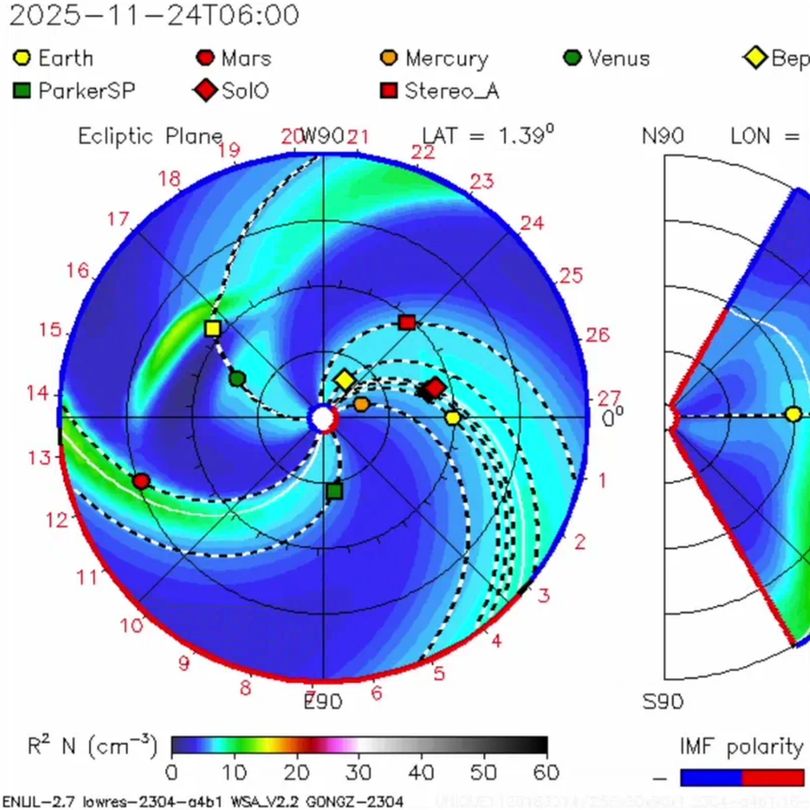
buff.ly/vX1n5Cm
📸 EarthSky.org.

buff.ly/vX1n5Cm
📸 EarthSky.org.
Read our daily sun news:
buff.ly/TusXyVX
📸 NOAA/ GOES.

Read our daily sun news:
buff.ly/TusXyVX
📸 NOAA/ GOES.
buff.ly/ROBlDye
📸 J. Fowler/ Wikimedia/ M. Tarbell/ W. Fink/ Univ. of Arizona.


buff.ly/ROBlDye
📸 J. Fowler/ Wikimedia/ M. Tarbell/ W. Fink/ Univ. of Arizona.
buff.ly/Ke3ffZO
See more great images, and submit your own recent photos, at EarthSky Community Photos:
buff.ly/wjemuid

buff.ly/Ke3ffZO
See more great images, and submit your own recent photos, at EarthSky Community Photos:
buff.ly/wjemuid
buff.ly/ZXda6Yh
Go to EarthSky Community Photos to see more great images. And give a like to your favs!
buff.ly/wjemuid

buff.ly/ZXda6Yh
Go to EarthSky Community Photos to see more great images. And give a like to your favs!
buff.ly/wjemuid
Visit here for more information on how to help!
buff.ly/q47QWBg

Visit here for more information on how to help!
buff.ly/q47QWBg
buff.ly/Y9dle5w
See more great images:
buff.ly/wjemuid

buff.ly/Y9dle5w
See more great images:
buff.ly/wjemuid
buff.ly/o0ODU5M
📸 Stephanie Stack/ Griffith Univ.

buff.ly/o0ODU5M
📸 Stephanie Stack/ Griffith Univ.
📸 NASA/ NASA/ Kim Shiflett.

📸 NASA/ NASA/ Kim Shiflett.
📸 NASA.

📸 NASA.
📸 ESO/ L. Calçada.

📸 ESO/ L. Calçada.

Read about Wisdom at: buff.ly/MFkj4H9
📸 USFWS/ Jon Plissner.

Read about Wisdom at: buff.ly/MFkj4H9
📸 USFWS/ Jon Plissner.
Read about asperitas, the newest-named form of cloud, at: buff.ly/zzFdbVv

Read about asperitas, the newest-named form of cloud, at: buff.ly/zzFdbVv
buff.ly/kbdNYSL
Have a recent photo of your own to share? Submit it here!
buff.ly/3ZFLovY

buff.ly/kbdNYSL
Have a recent photo of your own to share? Submit it here!
buff.ly/3ZFLovY
📷 Frank Merenda buff.ly/Lo3cEW9

📷 Frank Merenda buff.ly/Lo3cEW9
buff.ly/QcEQcZE
And read more here: buff.ly/moaQbYD
buff.ly/QcEQcZE
And read more here: buff.ly/moaQbYD
buff.ly/r2WWg0n
Have a photo of your own to share? Submit it here!
buff.ly/3ZFLovY

buff.ly/r2WWg0n
Have a photo of your own to share? Submit it here!
buff.ly/3ZFLovY
📸 NOAA/ GOES.

📸 NOAA/ GOES.
📸 Pixabay/EarthSky.

📸 Pixabay/EarthSky.
📸 Kelly Kizer Whitt.

📸 Kelly Kizer Whitt.
📸 Tahoenathan/ Wikimedia Commons (CC BY-SA 3.0).

📸 Tahoenathan/ Wikimedia Commons (CC BY-SA 3.0).
buff.ly/xW4FRCw
Have a photo of your own to share? Submit it to us, here!
buff.ly/3ZFLovY

buff.ly/xW4FRCw
Have a photo of your own to share? Submit it to us, here!
buff.ly/3ZFLovY
📸 NASA.

📸 NASA.


